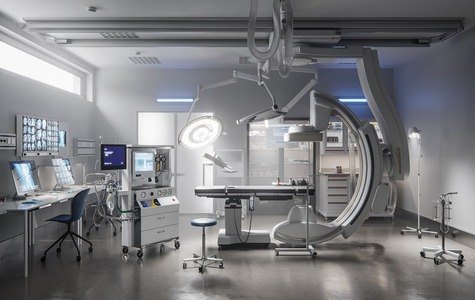- Medical Devices
- Thursday, 19 Sep 2019
NGS Makes Sequence Based Gene Expression Analysis a “Digital” Alternative to Analog Techniques
The growth of the infusion pumps market is attributed to the declining prices of sequencing services as well as various technological advancements in the field of sequencing during the recent years. Advancement in the field of molecular biology has equally enhanced the sequencing procedures. Many industry players have come up with innovative NGS technology in last few years. For instance, Pacific Biosciences with Sequel, and Oxford Nanopore with PromethION. Additionally, three advances NSG systems that dominate the market includes Roche GS FLX (454), Illumina HiSeq 2000 (Solexa) and AB SOLiD (Agencourt).
Some of the major primary and secondary sources for infusion pumps included in the report are World Health Organization (WHO), Organisation for Economic Co-operation (OECD), National Research Foundation (NRF), International Diabetes Federation (IDF), Canadian Institutes of Health Research (CIHR) and others.
Further modification and automation of this process continued to increase sequencing data and time reduction. Thereby allowing researchers to reach major milestones in the Human Genome Project. NGS makes sequence based gene expression analysis a “digital” alternative to analog techniques. Advancement in genome sequencing has made the sequencing easy and accurate.
In the recent years, next generation sequencing price have declined substantially. For instance, first whole human genome sequencing cost over US$3.7 billion in 2000 and took 13 years for the completion. However, the costs for the same in recent years has reduces to US$1,000 and the process requires less number of days. In 2000, cost for sequencing was US$ 3.7 billion, which dropped down to US$ 10 million in 2006 and declined to US$ 5,000 in 2012. Major market players such as Illumina and Roche have introduced breakthrough technologies that have enabled in the cost and time reduction in the sequencing.
Global infusion pumps market, based on product was segmented as, consumables, services and platforms. In 2017, consumables segment held the largest share by the market, by product. This is mainly attributed since these consumables are used at every stage of sequencing.
Global infusion pumps market, based on application was segmented as, diagnostics, drug discovery, precision medicine, and other applications. In 2017, diagnostics held the largest share of market, by application.
Global infusion pumps market, based on end user was segmented as, academic & research institutes, pharmaceutical & biotechnology companies, hospitals & clinics, and other end users. In 2017, academic & research institutes held the largest share of market, by end user. In addition, the hospitals & clinics segment is also anticipated to witness a significant growth, during the forecast period.
Related Industry Updates
Life Support Systems Market 2021 Remarking Enormous Growth with Recent Trends & Demand Till 2027 | | Stryker Corporation, Heyer medical AG, Koninklijke Philips N.V., Hamilton Medical & More
May 05, 2021
Orthopedic Trauma Devices Market Trends and Demand 2021 By Stryker, B. Braun Melsungen AG, Arthrex, Inc., CONMED Corporation
Apr 12, 2021
Image Guided Radiotherapy Market is expected to reach US$ 5,650.72 million by 2030
Dec 11, 2023
Nerve Repair and Regeneration Market Dynamics And Forecast 2021-2027 OrthoMed, Inc., Polyganics, Nuvectra, Stryker
Mar 19, 2021
Neurorehabilitation Gaming Systems Market Trends, SWOT Analysis, Strategies, Industry Challenges
Apr 05, 2021
Asia Pacific Nasal Delivery Devices Market Business Development during 2019-2027 with Growing Revenue US$ 21,402.86 | Business Market Insights
Mar 09, 2021
Medicine Iontophoresis Instrument Market Research Report by Regional Outlook, Trend, Share, Size, Application, Growth and Forecast to 2027
Mar 10, 2021
